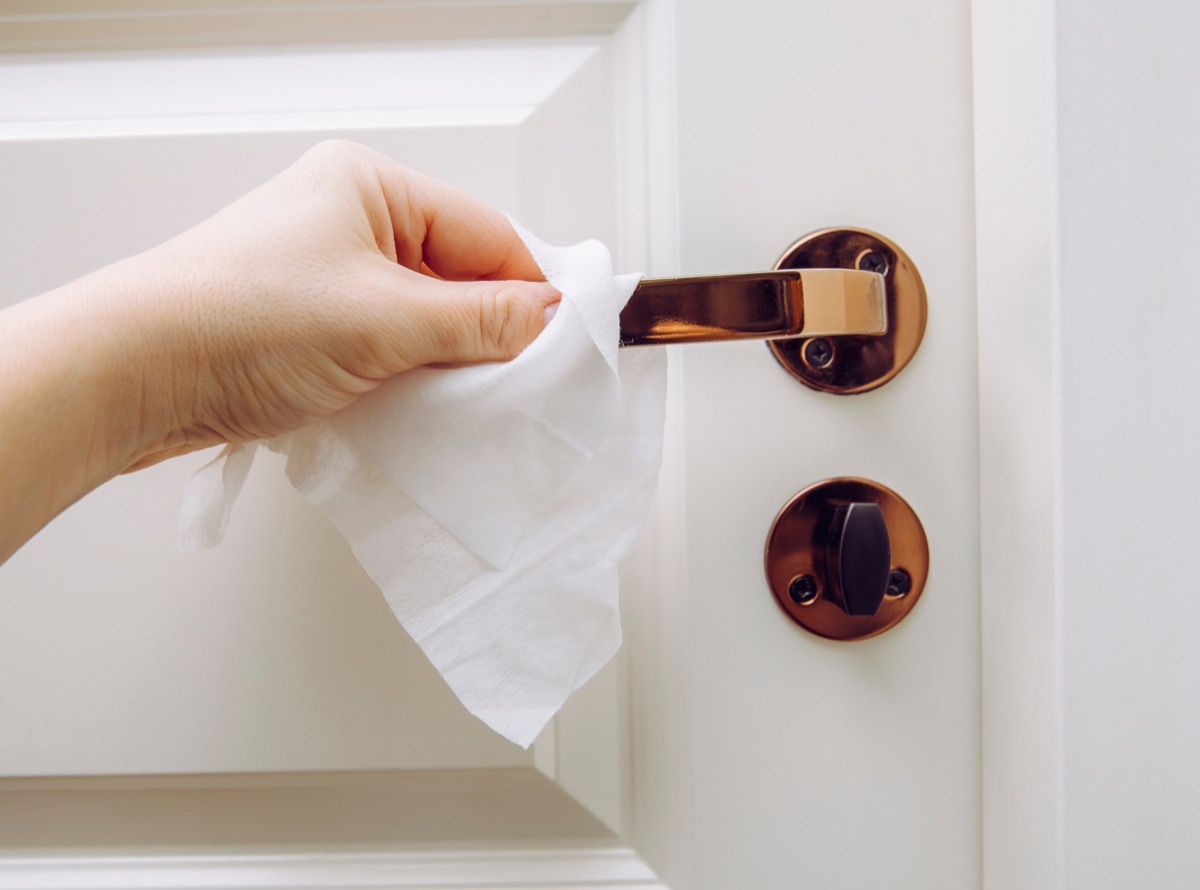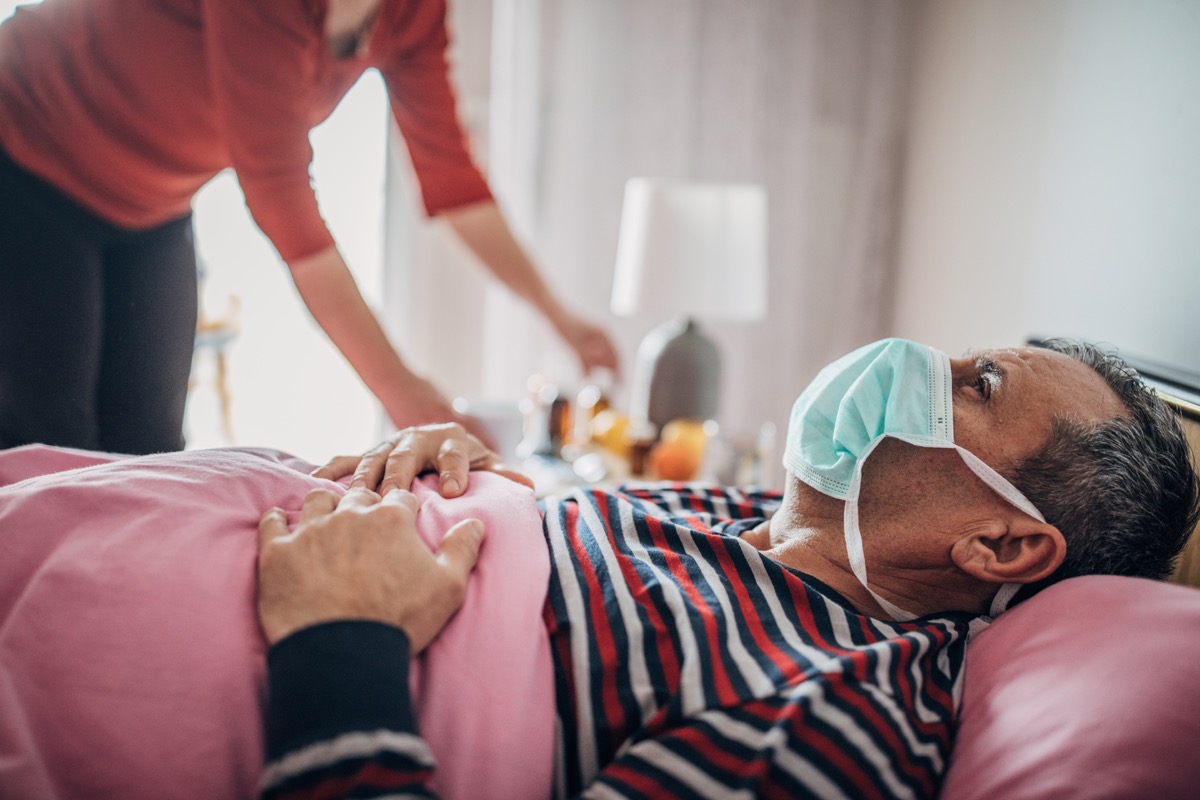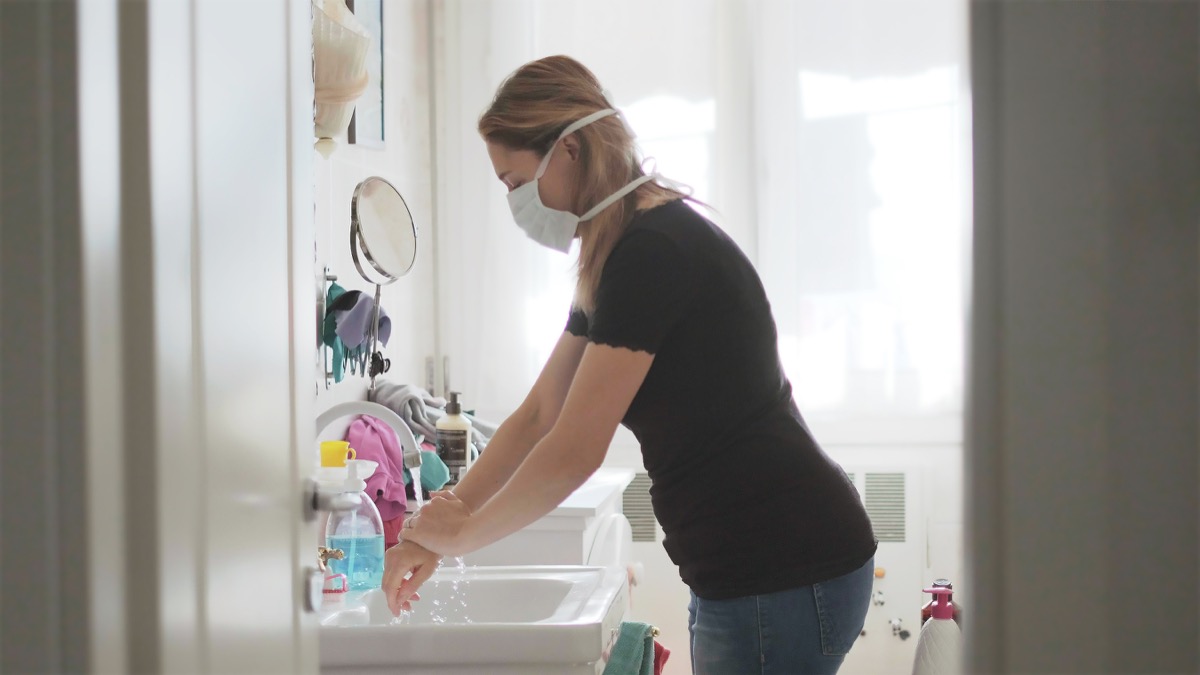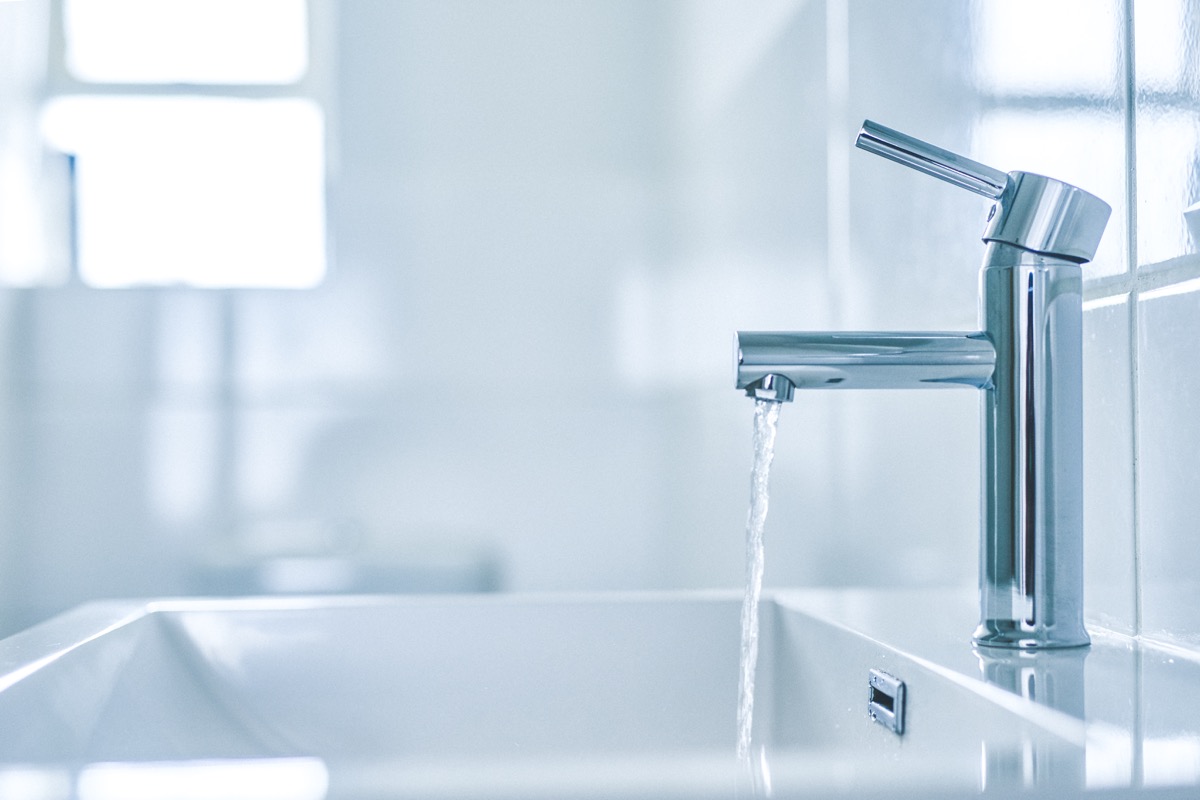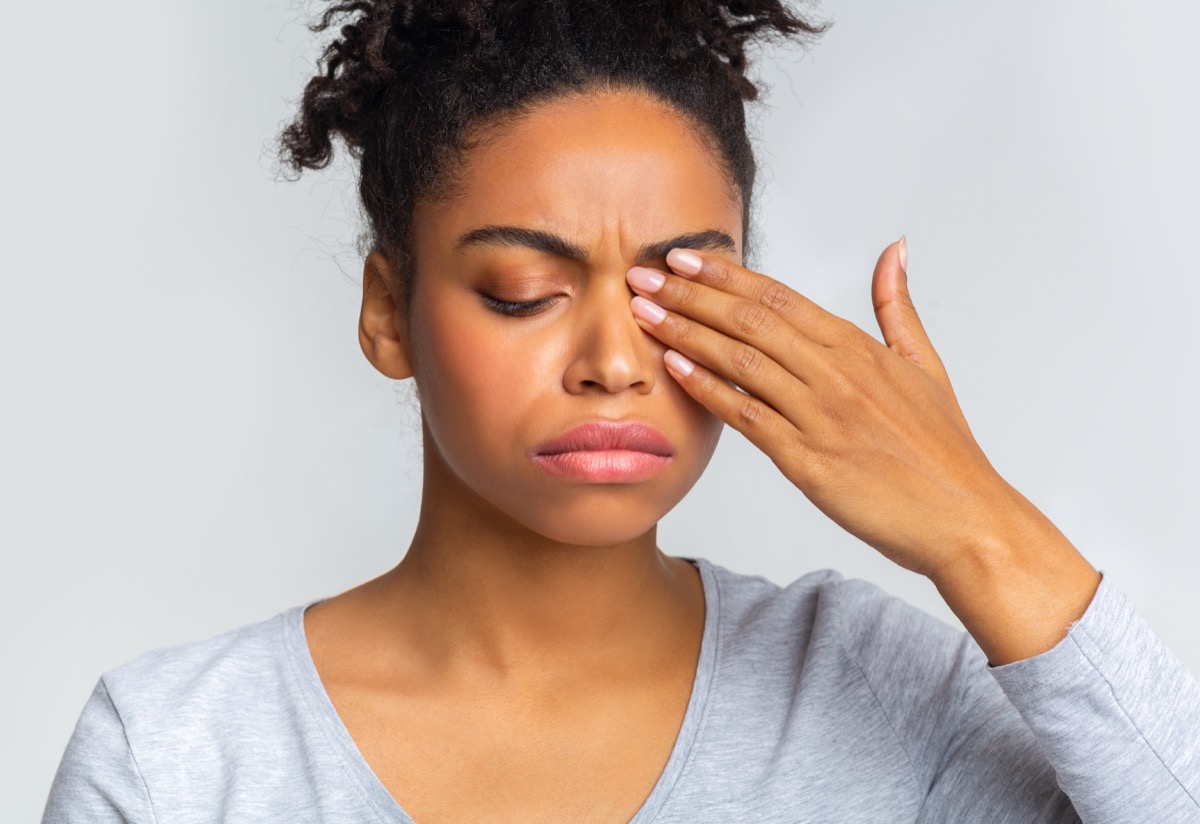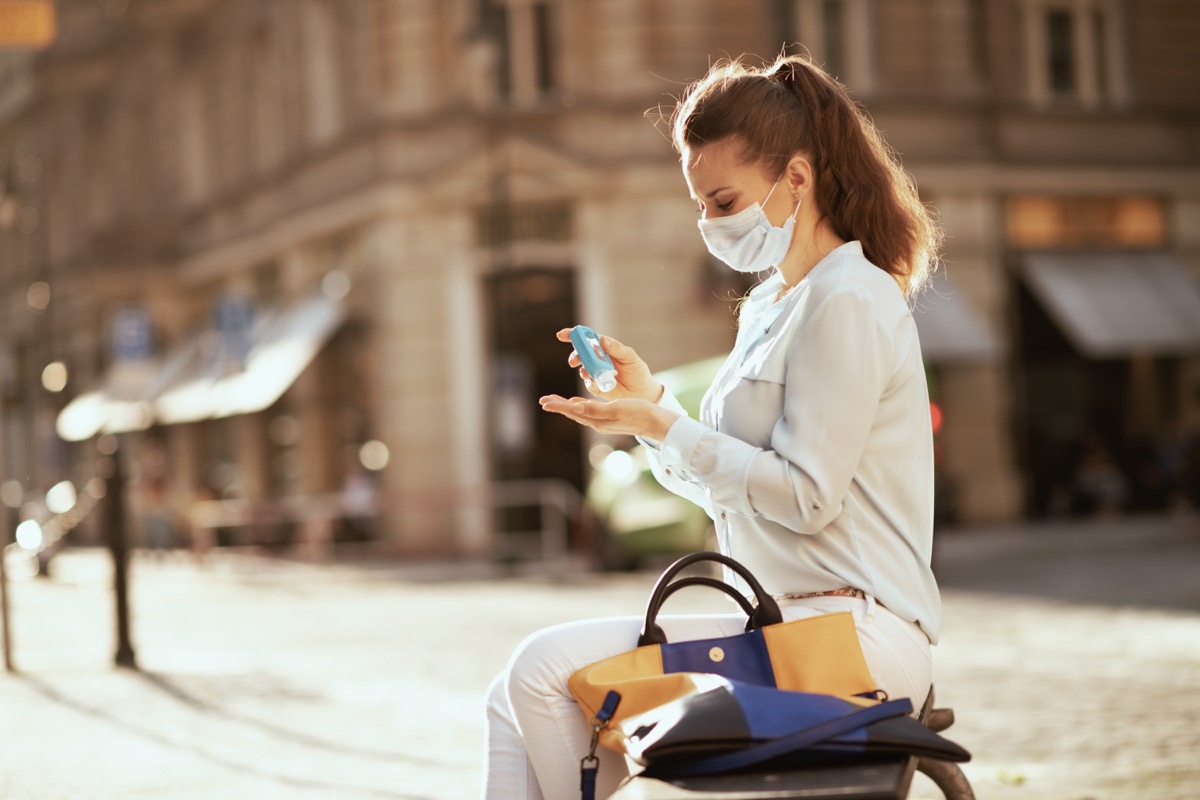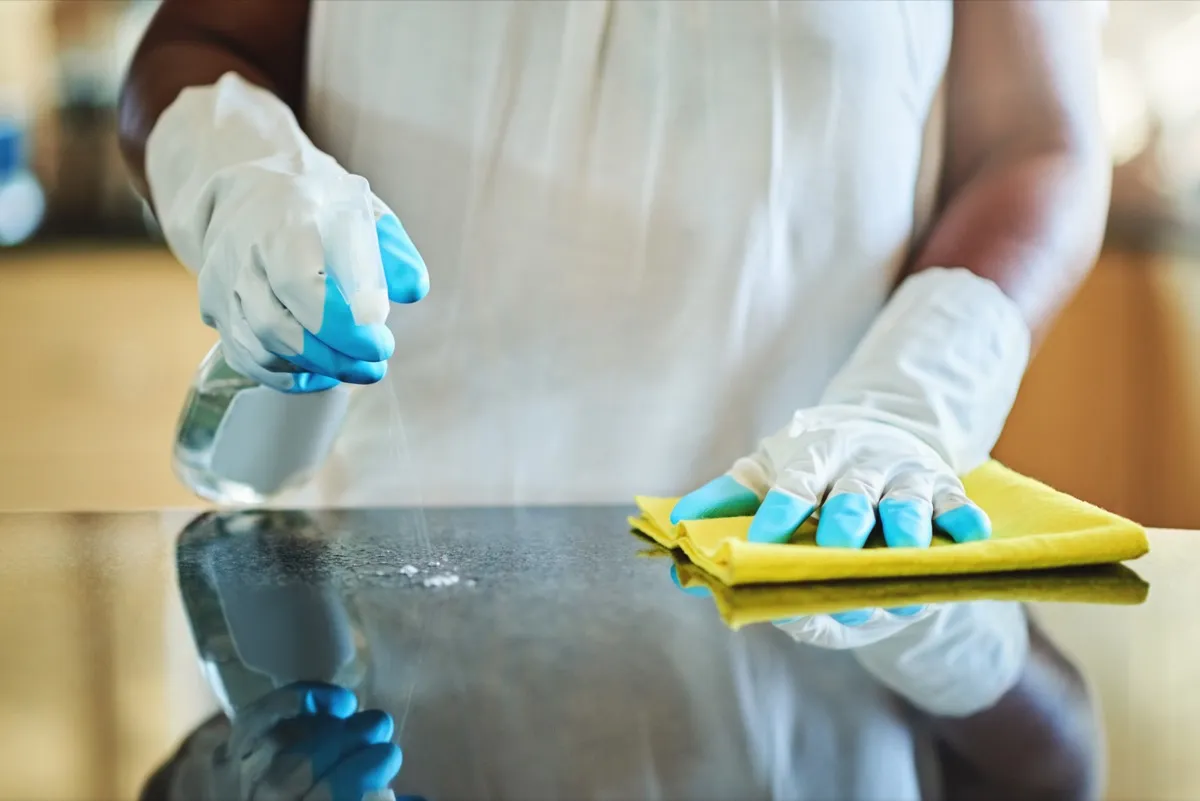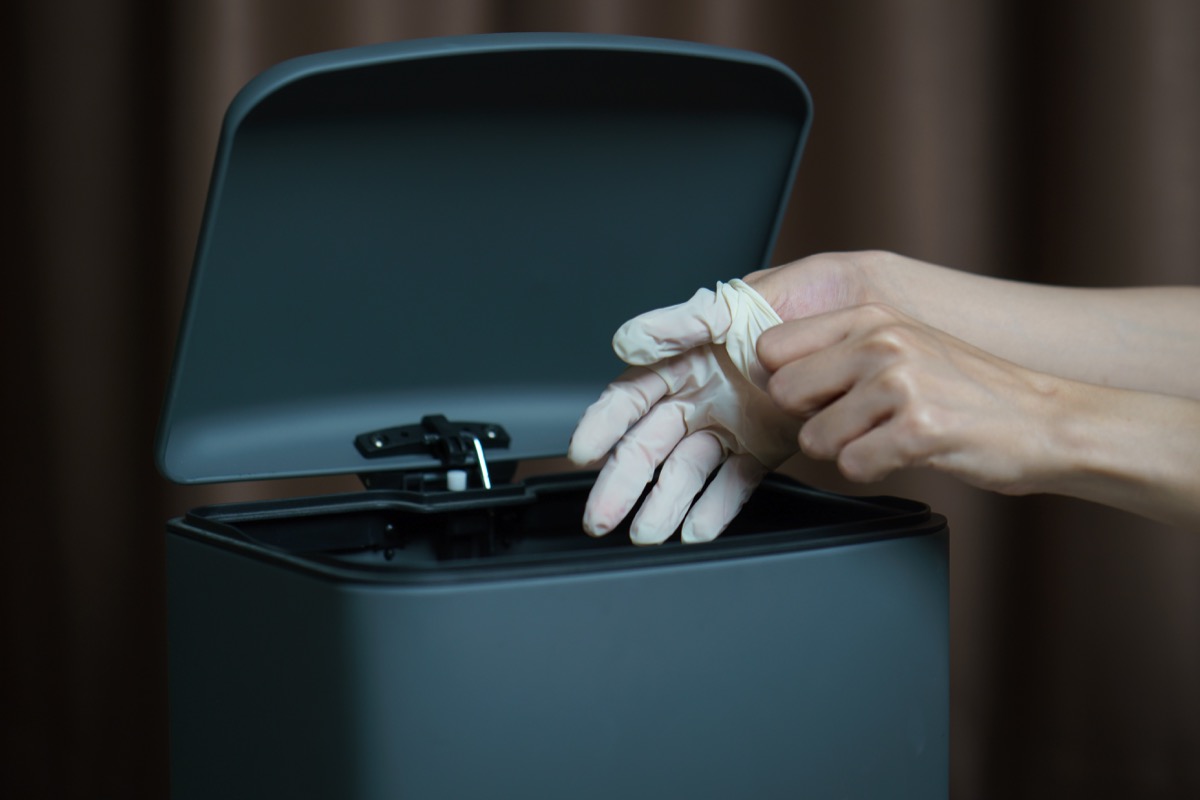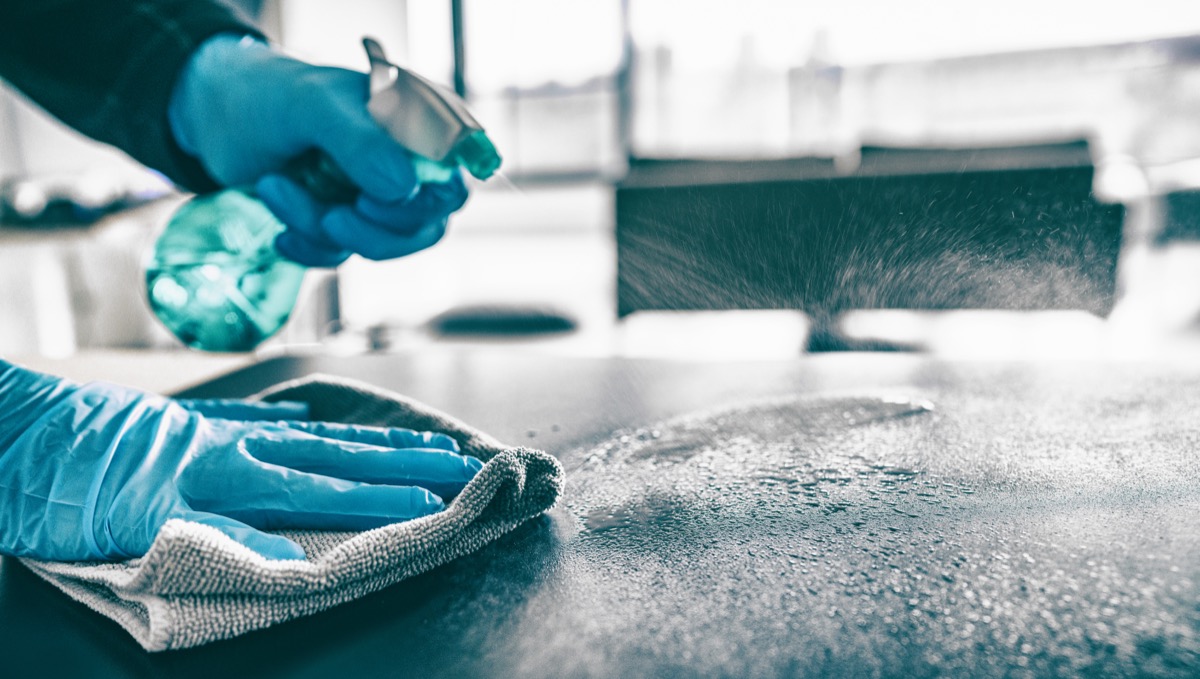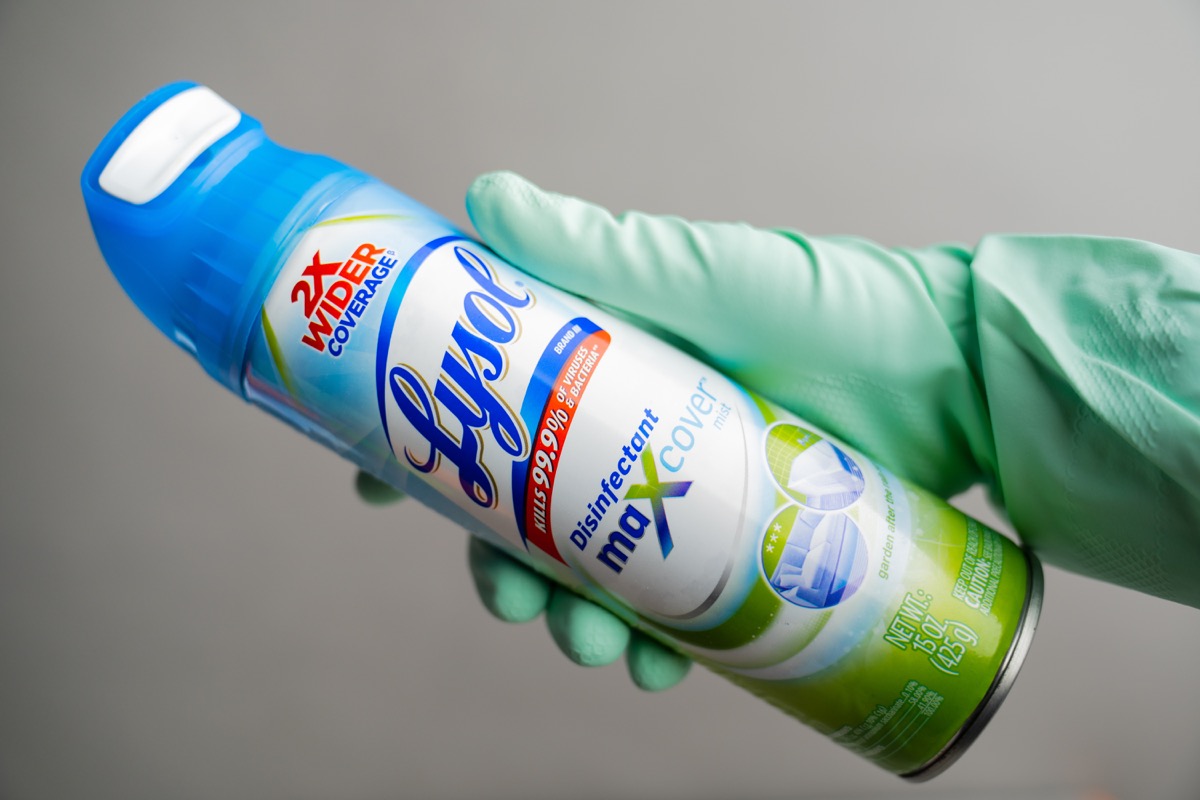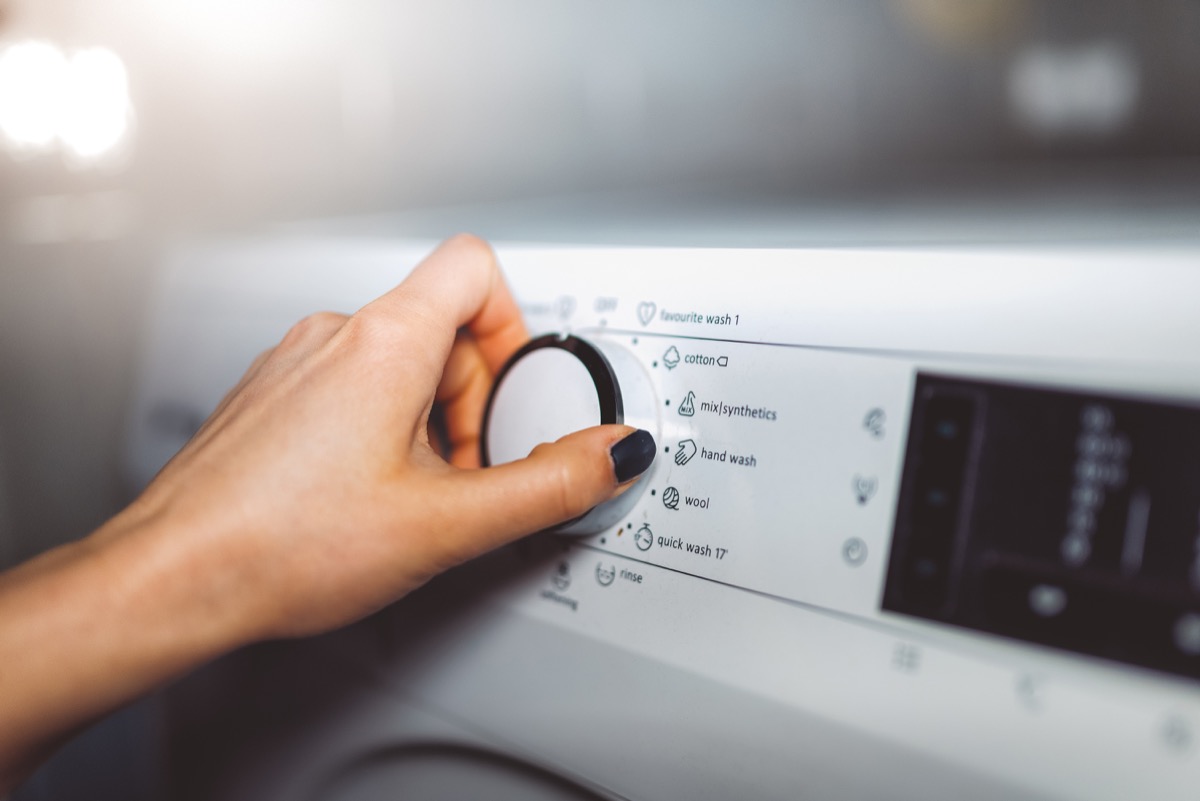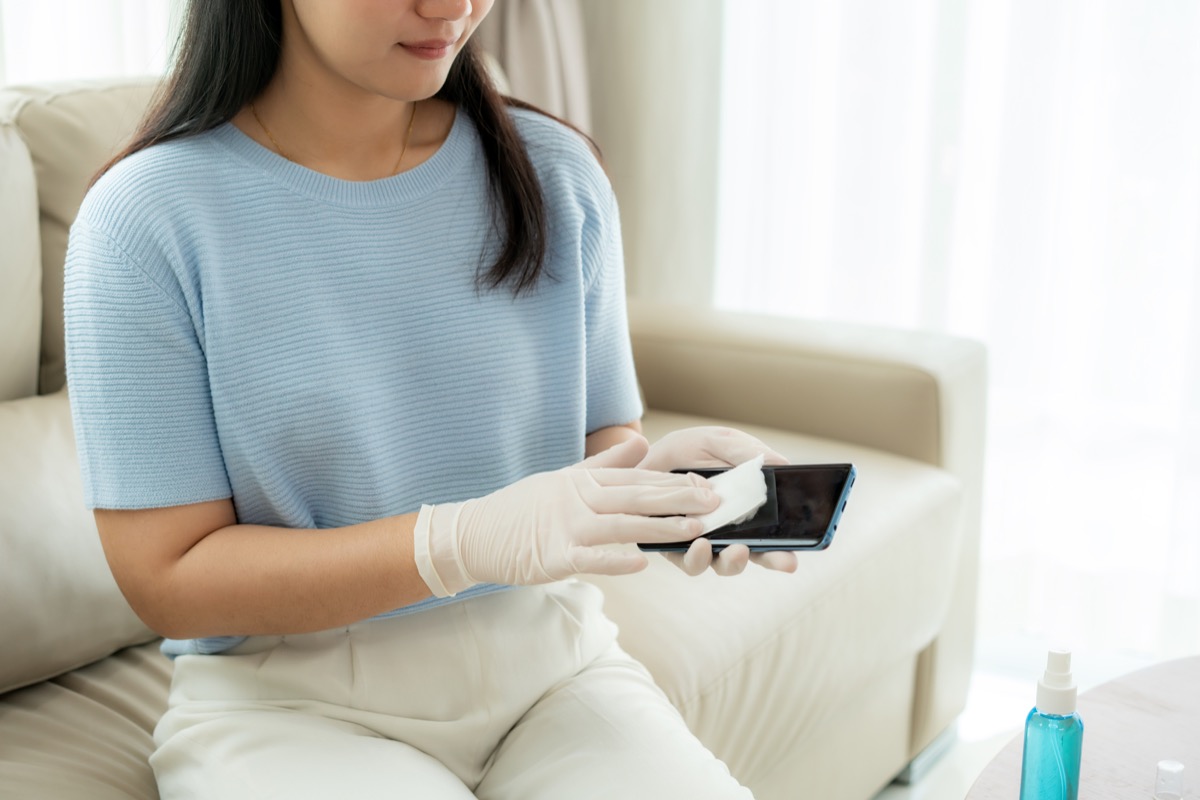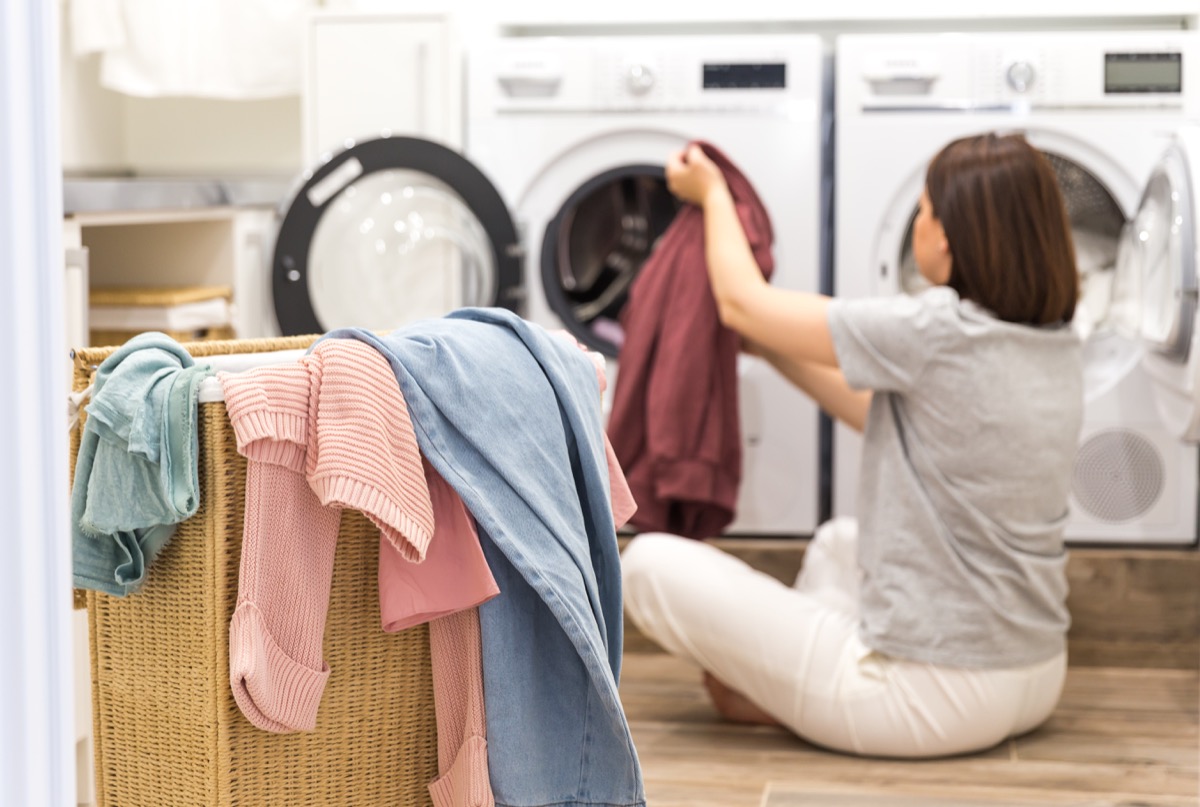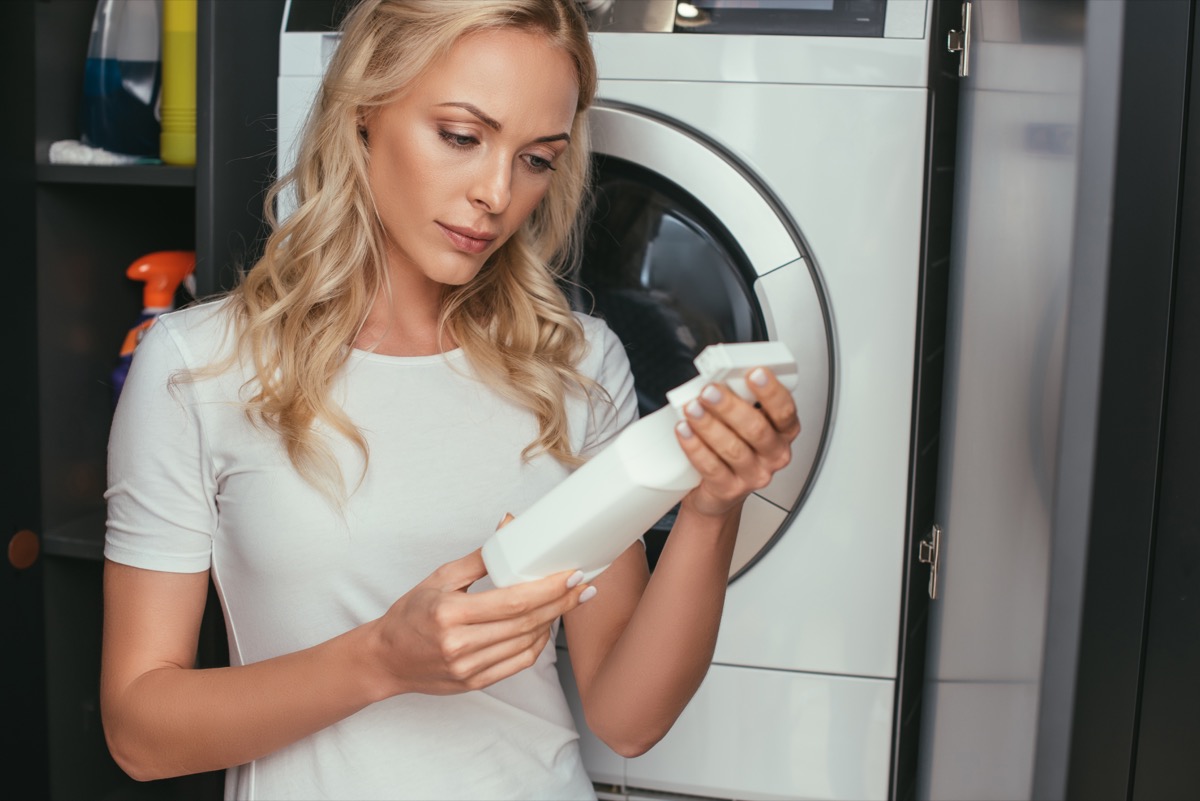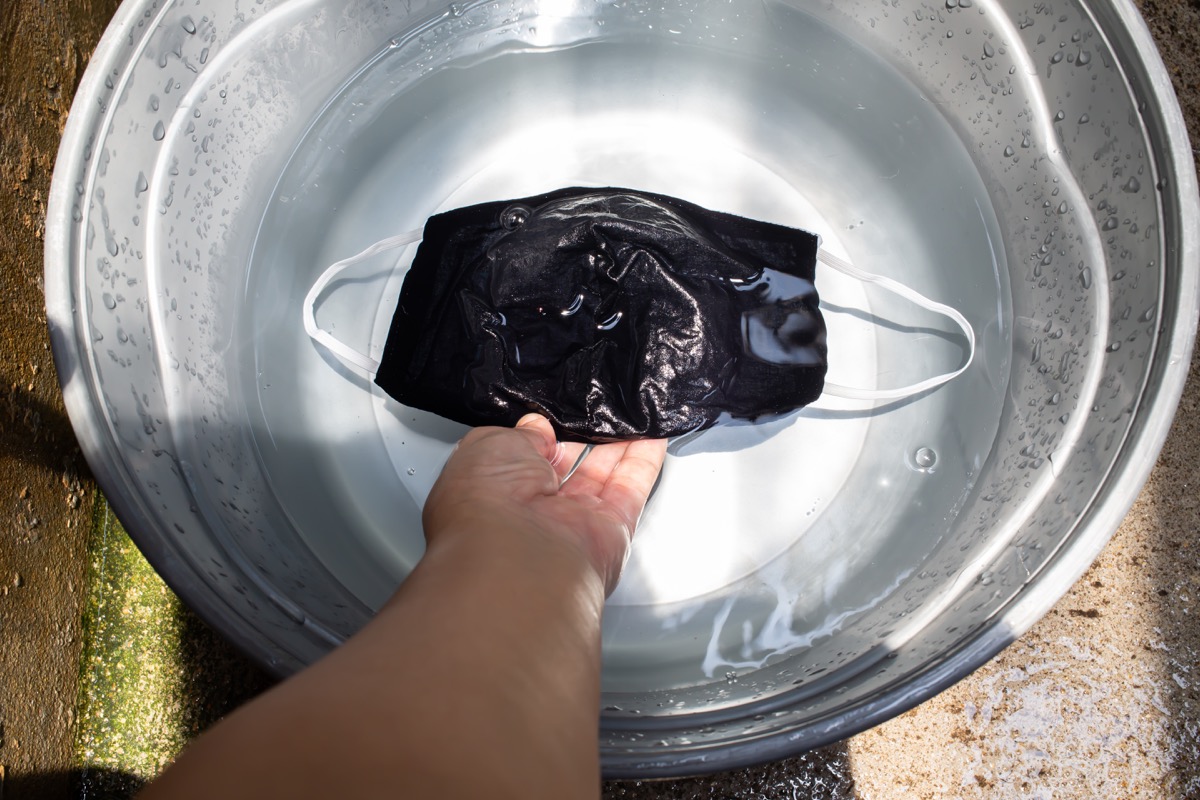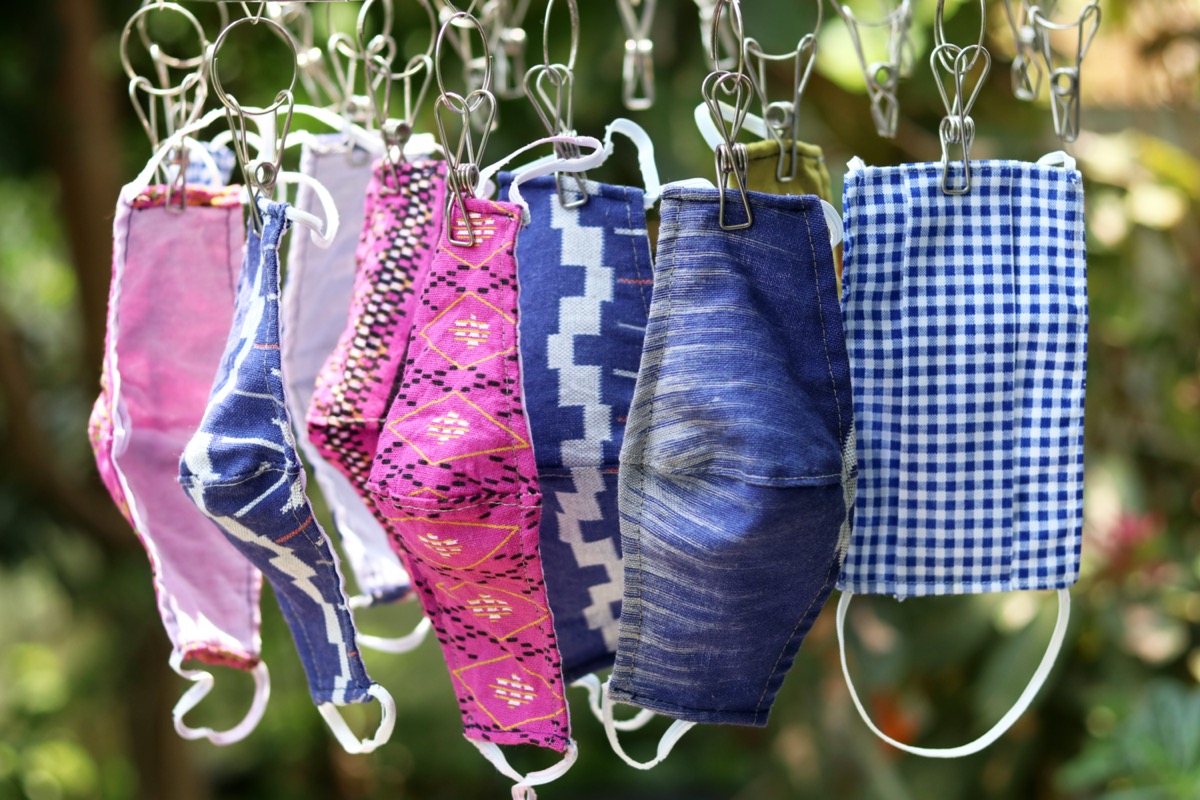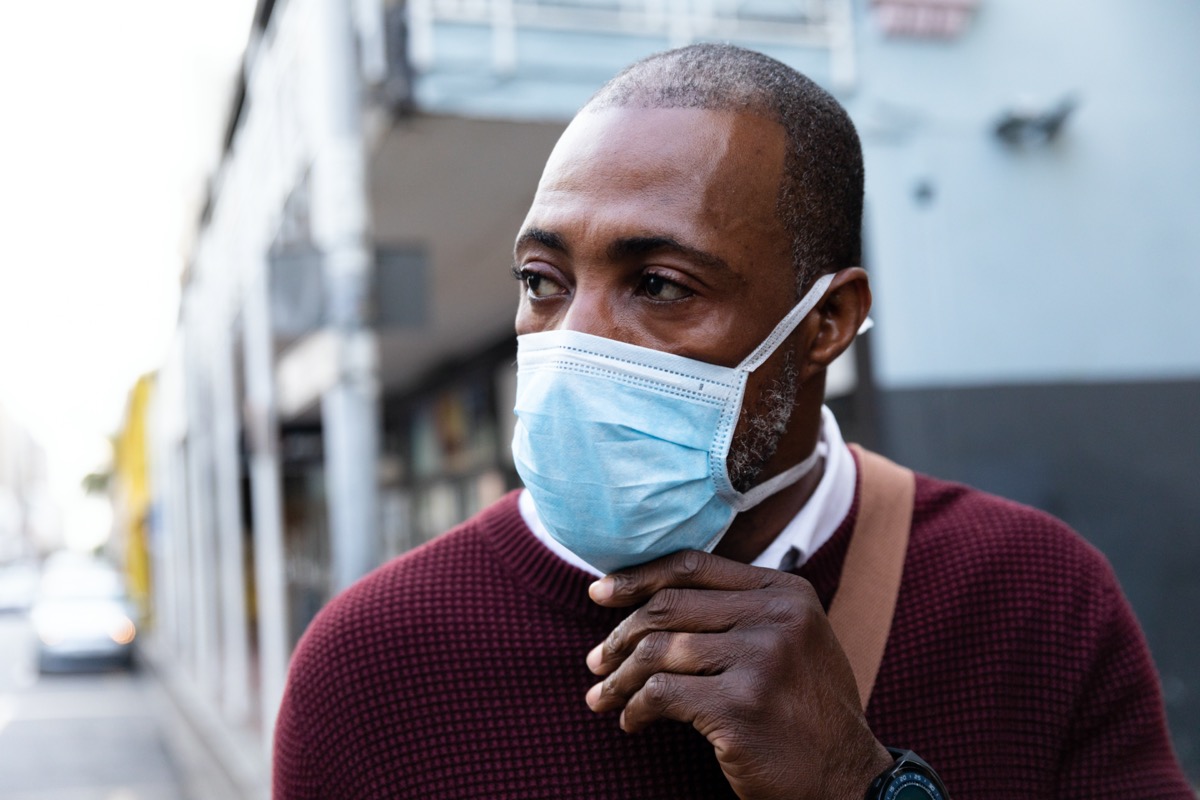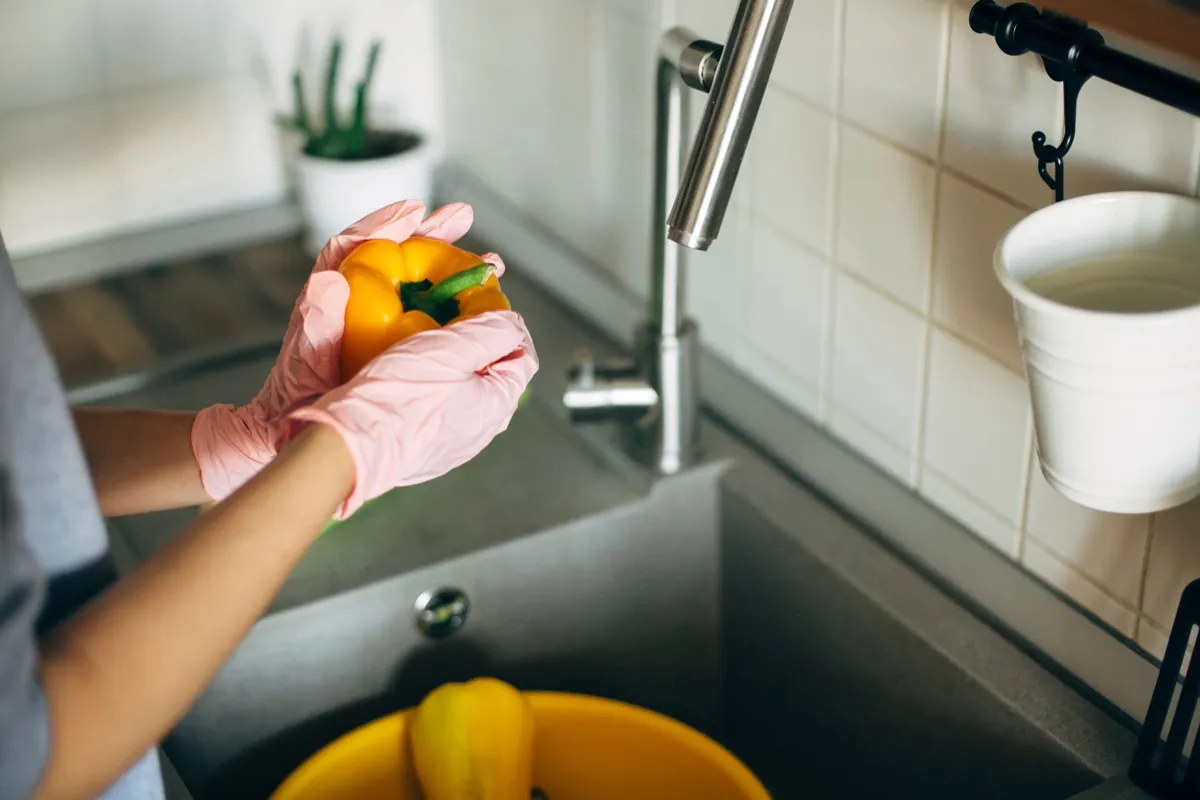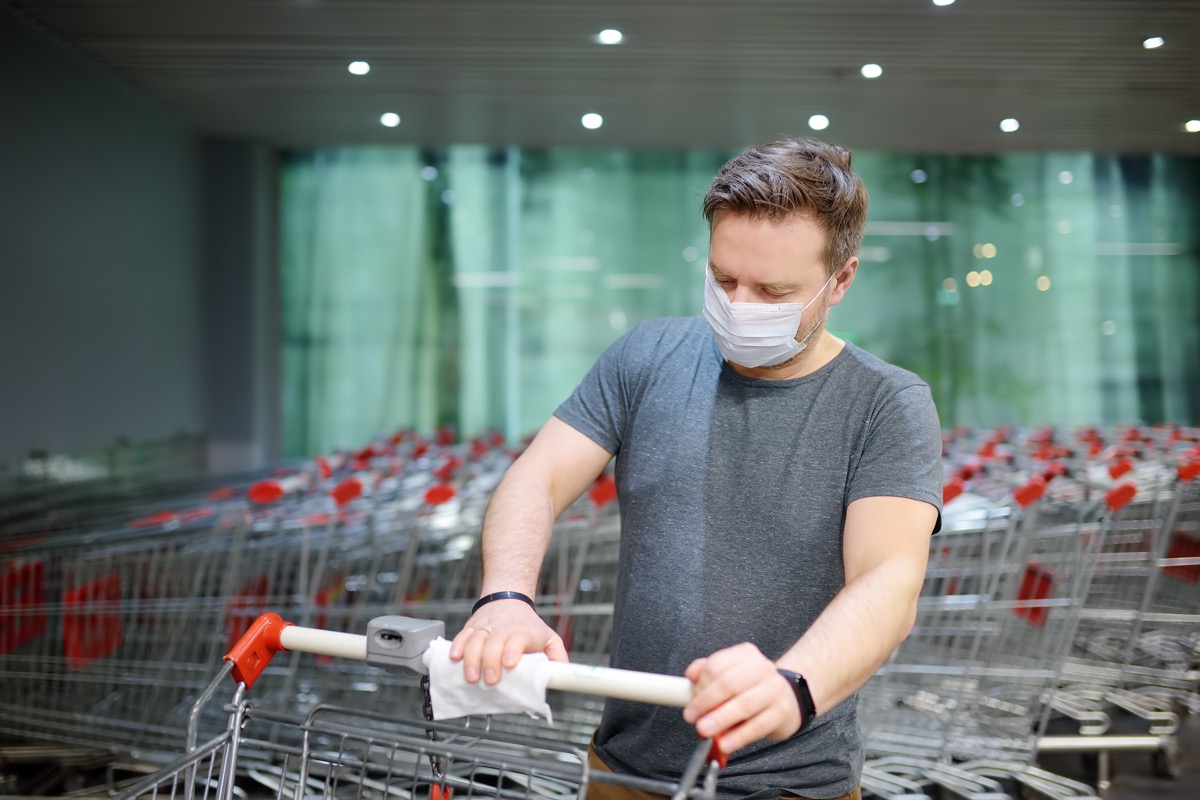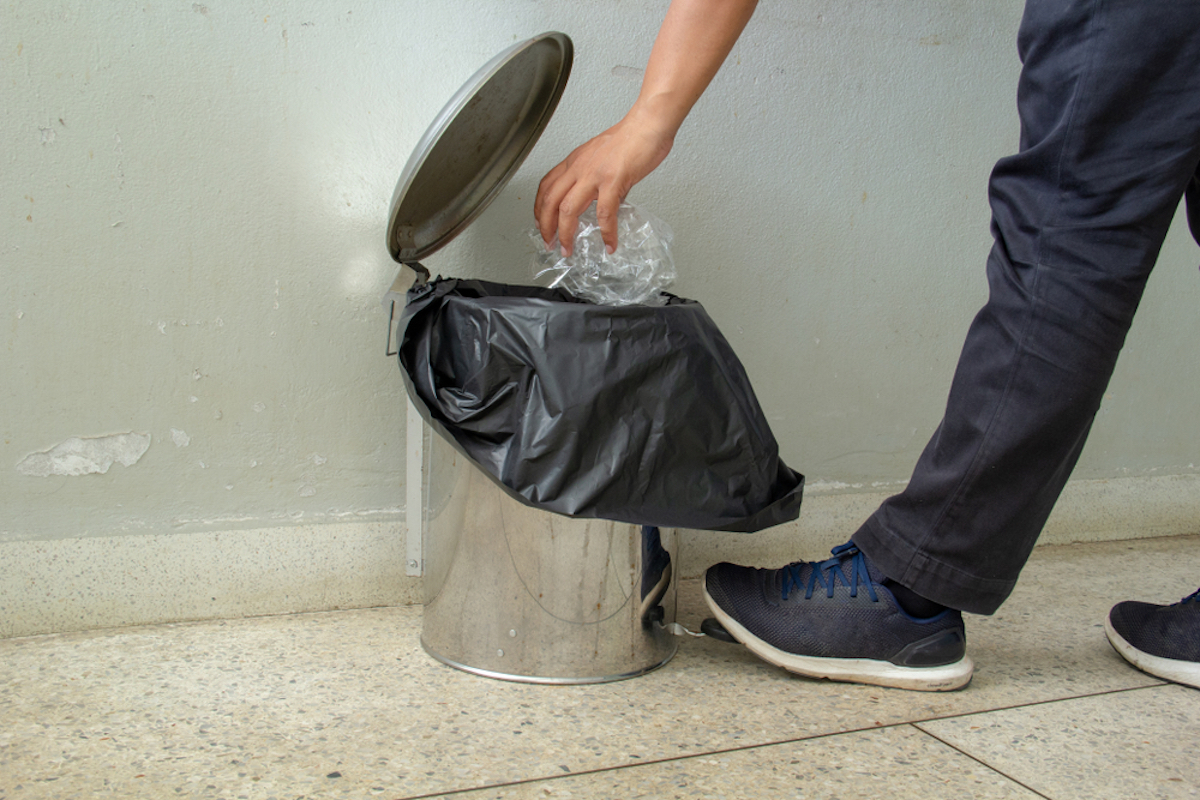Even though the coronavirus mainly spreads through person-to-person contact, you can still get infected through contaminated surfaces. The CDC recommends a daily cleaning of surfaces in your home that are touched often. This includes common areas such as “tables, hard-backed chairs, doorknobs, light switches, phones, tablets, touch screens, remote controls, keyboards, handles, desks, toilets, and sinks.” And for more help with cleaning, discover The No. 1 Thing You’re Definitely Not Cleaning Every Day But Should Be. However, if someone in your household has COVID, the CDC actually recommends being sparse with your cleaning in those areas—especially if the infected person is separated in a different bedroom and bathroom, as recommended. They say to reduce your cleaning schedule to an “as-needed” basis, like if there are soiled items or surfaces. This is so you can “avoid unnecessary contact with the ill person.” While it may be easy to relegate a sick person to a separate bedroom from everyone else, not every household has more than one bathroom available for use. According to the CDC, if a separate bathroom is not available, the bathroom should be cleaned after every time an infected person uses it. If that’s not possible, a “caregiver should wait as long as practical after use by an ill person to clean and disinfect the high-touch surfaces,” they say. And for cleaning supplies to avoid, here are 7 Cleaning Supplies That Don’t Actually Kill Coronavirus. Yes, hand hygiene is important. But if you’re not washing your hands long enough, you’re not really helping anything. The CDC recommends scrubbing your hands for at least 20 seconds to adequately clean for germs, including the coronavirus. Need help determining what 20 seconds is? The CDC recommends singing the “Happy Birthday” song from beginning to end, twice. The coronavirus can enter your body through your mouth, nose, or even your eyes. That’s why the CDC especially warns the public to wash their hands before touching their mouth, nose, or eyes after they’ve “touched an item or surface that may be frequently touched by other people.” This can include door handles, tables, gas pumps, shopping carts, or electronic cashier registers and screens. The best protection from the coronavirus is washing your hands, but soap and water are not always available on-the-go. The CDC says you can use hand sanitizer as a substitution, but only under two conditions—it’s alcohol-based with at least 60 percent alcohol, and your hands are not visibly dirty. And for more up-to-date information, sign up for our daily newsletter. Yes, you should be washing your hands for at least 2o seconds—but your hand sanitizer has time requirements, too. According to a CDC report in the Emerging Infectious Diseases journal, rubbing your hand sanitizer in for 30 seconds is the most effective, as any less could leave traces of the virus behind. Many cleaning products will recommend you wear gloves while using their product, but the CDC also specifically recommends doing so when cleaning and disinfecting surfaces for the coronavirus. The CDC recommends wearing disposable gloves when cleaning and disinfecting—and that these gloves be discarded after each use. However, if you are using reusable gloves, they should be “dedicated for cleaning and disinfection of surfaces for COVID-19 and should not be used for other purposes,” the CDC says. And to know when not to use gloves, Your Gloves Are Only Making Matters Worse in This Situation, CDC Says. Cleaning should be relegated to dirty surfaces and should be done before disinfecting, the CDC explains. You can clean these surfaces using a detergent or soap and water and then use an EPA-approved disinfectant to sanitize the area against COVID-19. The Environmental Protection Agency (EPA) has proven that two disinfectants—Lysol Disinfectant Spray and Lysol Disinfectant Max Cover Mist—actually kill the coronavirus, as tested. However, they have a list of nearly a hundred disinfectants that they approve to use against COVID (even though they haven’t been tested yet) because they should be effective. If you’re cleaning items or clothing with a washing machine, the CDC recommends that you use the “warmest appropriate water setting” to wash the items in, as hot temperatures can help sanitize and kills germs. And for more laundry tips, check out these 7 Coronavirus Laundry Tips You Need to Start Following. Yes, your frequently touched electronics—phone, tablets, computers, video game consoles—need cleaning, too. Your product may have manufacturer’s instructions for how to clean and disinfect, but if it does not, the CDC recommends using alcohol-based wipes or sprays containing at least 70 percent alcohol to disinfect touch screens. You may not have realized it, but shaking dirty laundry could actually spread the coronavirus. By avoiding this, you “will minimize the possibility of dispersing virus through the air,” the CDC says. Following the instructions for specific products is the key to making sure they work effectively. According to the CDC, many disinfectant products actually need to be left as a wet coating on surfaces for a specific amount of time before being wiped away to actually work. The directions on your disinfectant label should tell you how long. According to the CDC, cloth face coverings should be washed after every single use, whether by hand or in a washing machine. Leann Poston, MD, medical advisor for Invigor Medical, says to “purchase multiple cloth masks,” if you can’t clean one after every use. For dirty masks, “put them in a bag until they can be laundered,” she says. The CDC warns that you must let your mask dry completely after washing it before wearing it again. A wet mask is less effective at filtering out the bacteria it needs to. Are you about to put your mask on? The CDC says you need to wash your hands first! And what about taking off your mask? Per the CDC, you should wash your hands immediately after. After all, any germs already on your hands can travel to your mask and enter your body through your nose or mouth when putting it on. And any germs on your mask can travel to your hands when taking it off. While you may be determined to sanitize every thing that enters your home, you could be doing more harm than good. The CDC says you should not use “use disinfectants designed for hard surfaces, such as bleach or ammonia, on food packaged in cardboard or plastic wrap.” You should only “gently rinse fresh fruits and vegetables under cold, running tap water,” the CDC says. Do not try to clean them with soap, bleach, sanitizer, alcohol, disinfectants, or any kind of chemical.ae0fcc31ae342fd3a1346ebb1f342fcb Disinfectant wipes are an easy way to quickly sanitize anything before you touch it in public. The CDC recommends carrying these with you so you can use them for things like sanitizing a shopping cart before you use it or wiping down a gas handle before grabbing it. Although it’s better to not have anyone over at your house during the pandemic, if you are, it’s especially important for you to invest in a no-touch trash can, the CDC says. After all, as Poston previously told Best Life, “any surface that multiple people may touch can be a source of spread for COVID,” and a no-touch trash can limits the risk of people touching a possibly contaminated trash lid. One of the biggest mistakes you can make during the pandemic is sharing items that haven’t been cleaned from person-to-person. This is why the CDC encourages people not to share items that are “difficult to clean, sanitize, or disinfect.”
